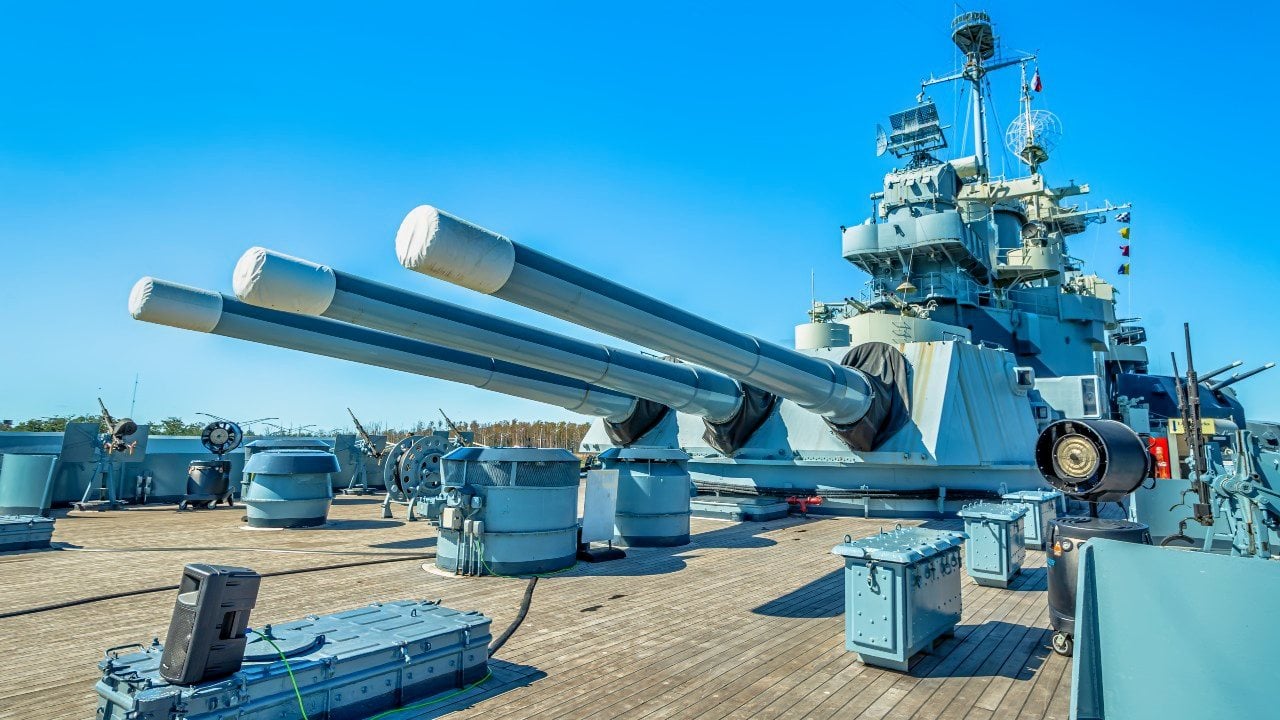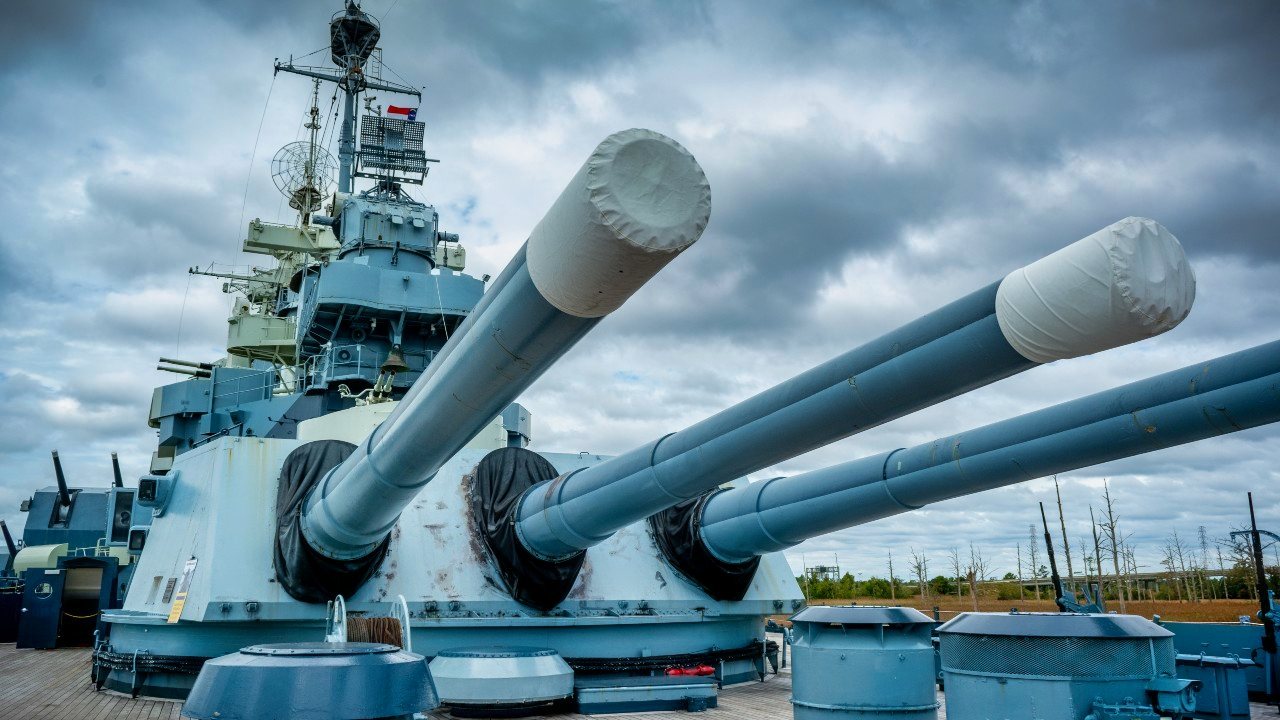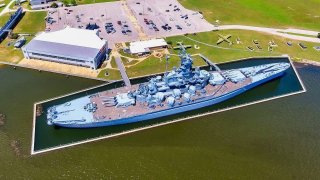Battleship USS North Carolina Had 1 Mission Explained in 2 Words
The term fast battleship is applied to a class of ships that was fast enough to perform tasks like escorting aircraft carriers, but did not make sacrifices to armor or armament (like a battlecruiser may have), and hence could engage with a battleship as a peer.
Wage War: The USS North Carolina was America’s first “fast battleship,” designed for both speed and strength. Launched in 1937, she could reach 28 knots, allowing her to escort carriers while retaining battleship-level armor and firepower.

-Armed with nine 16-inch guns and substantial anti-aircraft defenses, she served extensively in the Pacific Theater, participating in major battles like Iwo Jima and Okinawa.
-After the war, plans to convert her for modern uses were scrapped, and she was eventually saved from demolition by James Craig’s fundraising efforts.
-Today, the USS North Carolina serves as a museum ship in Wilmington, preserving her legacy.
USS North Carolina: America’s First ‘Fast Battleship’ Finds New Life as Museum Ship
The battleship was the preeminent warship class of the early twentieth century. And typically, when people think of battleship attributes, firepower is front of mind. But one class of battleship wasn’t built so much with an emphasis on firepower, but with an emphasis on speed: the North Carolina class.
Introducing the USS North Carolina
The USS North Carolina was the lead ship of the North Carolina class, which happened to be the U.S. Navy’s first-ever “fast battleship.” The term fast battleship is applied to a class of ships that was fast enough to perform tasks like escorting aircraft carriers, but did not make sacrifices to armor or armament (like a battlecruiser may have), and hence could engage with a battleship as a peer.
The North Carolina was laid down in 1937, before the Japanese had trained their eyes on Pearl Harbor. Commissioned in April 1941, while the United States was still at peace, the North Carolina would be hastened into action following the Japanese surprise attack.

The boat was fast, capable of reaching 28 knots. For propulsion, the North Carolina relied on eight Babcock & Wilcox boilers, which could generate 121,000 horsepower. Fully loaded, the vessel displaced over 45,000 tons. The North Carolina measured 728-feet long with a 108-foot beam and a thirty-two-foot draft.
And while the North Carolina was built for speed, she was still expected to hold her own with respect to firepower. Accordingly, she was outfitted with nine 16-inch Mark 6 guns; twenty 5-inch dual-purpose guns; sixteen anti-aircraft guns; and eighteen .50-caliber machine guns. To withstand an onslaught from rival battleships, the North Carolina was outfitted with armor measuring 16 inches thick along the gun turret and 12 inches thick along the belt.
The North Carolina at war
The North Carolina spent the majority of World War II in the Pacific Theater. For much of the war, the North Carolina was used for her speed, to screen for aircraft carriers; as a carrier screen, the North Carolina saw action early, in the Battle of the Eastern Solomons, and later at the Gilberts, Marshalls, Mariana, and Palau Islands. The North Carolina also participated in the Battle of the Philippine Sea, the Battle of Iwo Jima, and the Battle of Okinawa.
During the war, the North Carolina was used extgensively. She was damaged, too, surviving a torpedo strike from a Japanese submarine, and surviving Typhoon Cobra, an epic storm that sank three American vessels and killed nearly 800 sailors.
The North Carolina in retirement
After the war, the North Carolina was decommissioned. Originally, the Navy had hoped to convert the ship for other purposes; some hoped to make the North Carolina even faster, or to convert her into a helicopter carrier. Conversion projects were eventually abandoned, however. Yet, the North Carolina would remain in the navy’s registry for over a decade, before finally being struck in 1960.
The North Carolina was set to be scrapped. But a man from North Carolina, James Craig, initiated a campaign to postpone the scrapping, and then raise the quarter of a million dollars necessary to prepare the vessel for display as a museum ship. Thanks to Craig’s efforts, you can still visit the North Carolina today, in Wilmington, North Carolina.
About the Author: Harrison Kass
Harrison Kass is a defense and national security writer with over 1,000 total pieces on issues involving global affairs. An attorney, pilot, guitarist, and minor pro hockey player, Harrison joined the US Air Force as a Pilot Trainee but was medically discharged. Harrison holds a BA from Lake Forest College, a JD from the University of Oregon, and an MA from New York University. Harrison listens to Dokken.
Image Credit: Creative Commons and/or Shutterstock.


